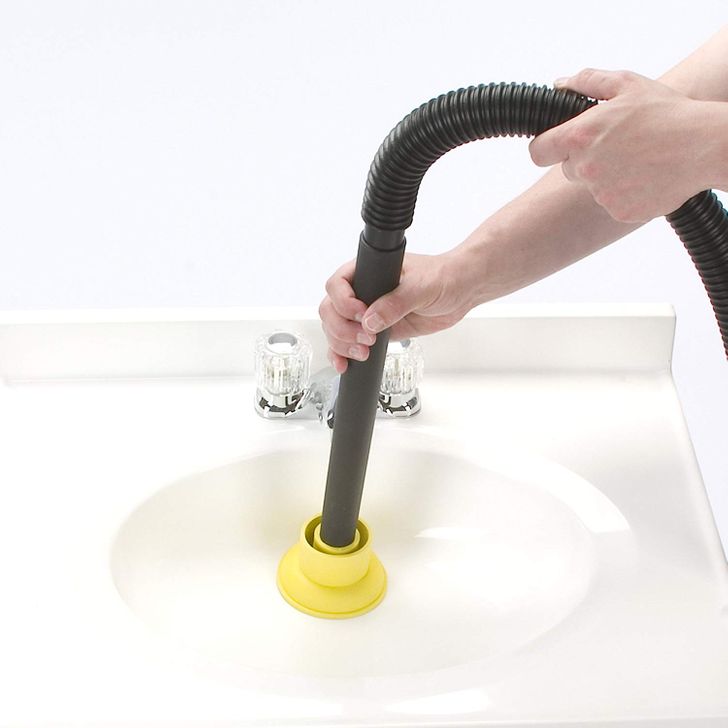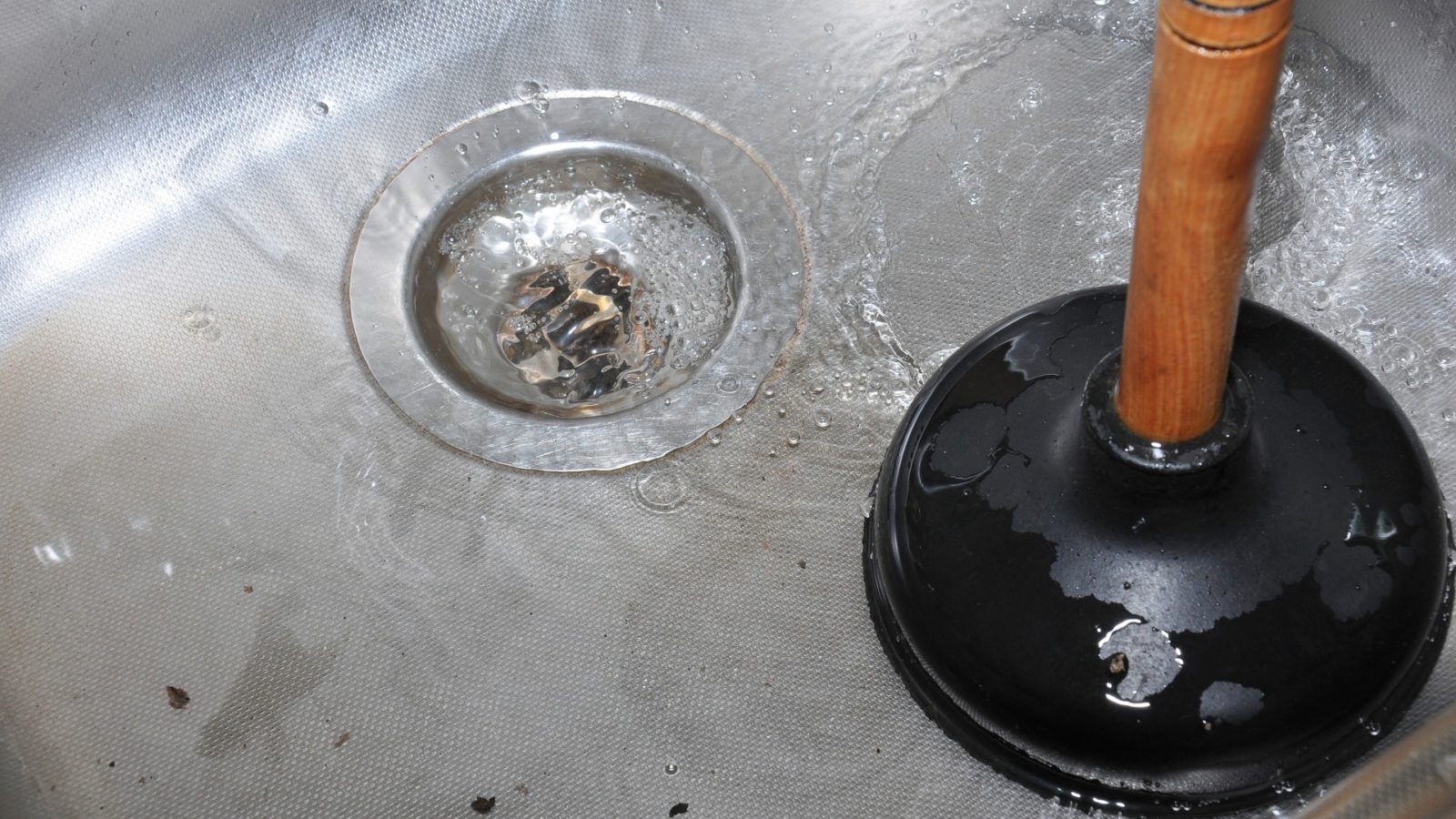Presented here in the next paragraph you will discover some dependable help and advice relating to Why Is My Sink Not Draining?.

It's not normal for your cooking area sink to congest several times in one month. If your sink blocks two times a week, there's some problem taking place.
An obstructed kitchen area drain doesn't simply decrease your tasks, it weakens your entire plumbing system, bit by bit. Below are some typical practices that encourage sink blockages, and also exactly how to avoid them.
You require appropriate waste disposal
Reusing waste is excellent, however do you pay attention to your natural waste too? Your cooking area ought to have 2 different waste boxes; one for recyclable plastics and one more for organic waste, which can come to be garden compost.
Having a designated trash can will help you and also your family members prevent throwing pasta and also various other food remnants away. Normally, these remnants absorb dampness as well as become blockages.
The fault isn't from your cooking area sink in any way
Maybe the trouble isn't from your kitchen area sink, but the whole drain system. In such a case, you might notice that sinks as well as drains obtain clogged every other week. You require an expert plumbing solution to repair this.
You're throwing coffee down the tubes
Used coffee premises as well as coffee beans still soak up a significant quantity of moisture. They might appear small adequate to throw down the drain, however as time goes on they begin to swell and also take up even more space.
Your coffee grounds must enter into organic garbage disposal. Whatever portion leaves (probably while you're depleting) will be dealt with throughout your monthly clean-up.
You have actually been eating a lot of oily foods
Your kitchen sink may still obtain blocked despite natural garbage disposal. This may be since you have a diet plan abundant in greasy foods like cheeseburgers.
This grease layers the insides of pipes, making them narrower as well as even more clog-prone.
Utilize a bettor
- 1. Block the sink's overflow hole with a little rag.
- 2. Put your cup-shaped sink bettor-- not a toilet plunger, which has a flange for securing a toilet's outlet-- over the sink drainpipe.
- 3. Fill the basin with adequate water to cover the plunger's cup.
- 4. Currently plunge up and down in other words, fast movements to require as much air as feasible down into the drain.
- 5. If the obstruction dislodges, you ought to see the water in the sink swiftly recede.
Your pipe wasn't dealt with properly in the first place
If you have actually been doing none of the above, yet still get regular blockages in your kitchen area sink, you should certainly call a plumber. There might be a problem with exactly how your pipelines were mounted.
While your plumber arrives, check for any leaks or irregularities around your kitchen area pipelines. Do not try to fix the pipes yourself. This might create a crash or a kitchen flood.
Someone tried to clean their hair in the cooking area sink
There's a correct time and also area for everything. The kitchen sink is just not the best location to clean your hair. Cleaning your hair in the cooking area sink will certainly make it obstruct sooner or later unless you use a drain catcher.
While a drainpipe catcher could capture a lot of the results, some hairs might still get through. If you have thick hair, this might suffice to reduce your water drainage and eventually form a clog.
There's more dust than your pipelines can manage
If you obtain fruits straight from a ranch, you might observe more kitchen dirt than other people that shop from a mall. You can easily fix this by cleaning the fruits and also veggies effectively prior to bringing them right into your house.You require appropriate waste disposal
6 REASONS FOR A SLOW DRAINING BATHROOM SINK
Your bathroom sink is a regular part of your everyday routine. Every visit to the toilet follows with washing your hands. Every tooth brushing and flossing also happens over the sink, where you expect to clear away everything down the drain.
Unfortunately, you might encounter hiccups with your sink from time to time. A typical problem that many homeowners face is a slow draining bathroom sink. Sometimes, the water doesn’t seem to clear away quickly enough. Whatever you washed off will linger in the sink basin, leaving behind unsightly conditions in your bathroom.
If you notice a slow draining sink, it is time to mobilize. Whatever the problem might be, you don’t want to wait until it becomes a full-on clog that overpowers your plumbing system. You should bring in professional plumbers to inspect the bathroom pipes. In addition, have yearly maintenance and inspections to avoid costly repairs in the long run.
Slow draining sinks are more than an annoyance and can lead to the nightmare of a plugged-up pipe. Understanding why you have a draining problem is as important as fixing it. Once you understand the causes, you can be proactive to stop a blockage from building up. Here are the six reasons for a slow draining bathroom sink:
HAIR
Hair is a common cause of a slow draining bathroom sink. We all have lots of hair and spend much time grooming it. From brushing to shaving to washing, the hair leaves our bodies and makes its way down our drains. Unfortunately, it can get caught up during its journey down the pipes, restricting water flow. Hair also becomes a catch net for other debris.
Facial hair creates a similar problem for your bathroom sink. Shaving cream mixed with beard trimmings will form a thick gum that readily builds up in the sink drain. When dealing with hair in your sink, try to wipe it out of the bowl before rinsing. Use a paper towel to clean the basin so that the hair residue doesn’t get washed down the drain.
SOAP SCUM
Soap scum is another common culprit for a slow draining sink in the bathroom. Since we use soap to clean our hands and face, you’d think it should also wash the pipes below your sink. However, that is not the case at all. Soap scum loves to build upon the insides of plumbing pipes. Over time, the accumulation can grow into a significant problem for your household.
Soap scum starts as a film, but it will increase until you notice the water draining slower and slower. The soap is also very sticky, attracting other debris to join the blockage. Fortunately, hot water can address this problem and fix a slow draining sink. Get your kettle filled up and slowly pour the boiling water down the bathroom drain.
P-TRAP BLOCKAGE
Your p-trap is an area in the drainpipe under the sink where it forms a U shape. This component prevents sewer gas from coming up through the sink by allowing a water barrier to sit in the low spot. However, it might also collect debris that you wash down the bathroom sink.
If you notice your water draining more slowly, check the p-trap. There is a clean-out plug at the bottom of the trap, helping you to clear away minor problems. If there is a more significant blockage, contact a residential plumber for help. This expert can disconnect the entire p-trap pipe system, flushing it out with a hose. They will also put it back together and ensure your bathroom sink works properly again.
VENTING ISSUES
Your household’s plumbing system is a network of interconnecting pipes. The water lines in a bathroom sink connect with drain pipes and venting pipes. They all work in unison to ensure the water flows in and out. When you encounter a slow draining bathroom sink, there could be an issue with your venting.
Vents allow air to get drawn into the line, so you don’t create a vacuum that restricts the water flow. If your vent stack is clogged, it won’t allow the air to push the water. Check the stack on the roof to see if a bird has taken up residence there. Or maybe some other debris is plugging up the vents. Hire experts to clean out the vents, which might resolve the plumbing issue.
TREE ROOTS
The sink’s pipes travel through your home, where it connects outside to drain into your municipal system or a septic tank. Along the way, the pipes might get punctured by tree roots. If there are leaks in your underground pipes, trees may seek out the water source and grow into the space.
Tree roots are a slow-moving encroachment, so be wary of where they might interact with your pipes. The same caution goes to any shrubs you may plant nearby. Once the tree roots have invaded the pipes, you will need a plumber to solve the problem, which may end up being a significant repair.
SEWER LINE PROBLEMS
Besides tree roots plugging up your sewer lines, other blockages can happen. Your sewer line carries the wastewater out from your sink, toilets, and showers away from your home. These pipes can deteriorate over time, collapsing into the line and causing a blockage. Sludge may also accumulate, which slows down the drainage of water. Contact a professional plumber to inspect the situation thoroughly.
https://marcoplumbing.ca/blog/6-reasons-for-a-slow-draining-bathroom-sink/

I hope you enjoyed reading our piece on What To Do When Your Kitchen Sink Won’t Drain. Thanks a lot for taking time to browse our piece. Kindly take the opportunity to share this blog entry if you enjoyed it. Thank you for going through it.
Browse Website
Comments on “Beyond The Plunger - 6 Factors Causing Your Kitchen Sink Blockage”